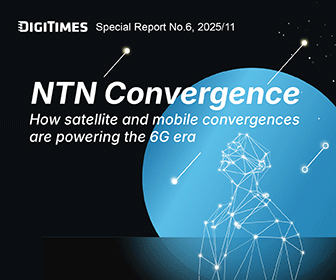In this wave of ChatGPT-fueled generative AI, Foxconn has leveraged its long-established position in the server industry to continue to be involved in the AI ecosystem. Whether it's the manufacturing of AI servers or the implementation of AI in practical applications, Foxconn is slowly laying out a comprehensive plan that covers the upstream and downstream of the AI hardware industry and the service application market.
Previously, Foxconn chairman Young Liu stated that Foxconn has a market share of over 40% in the global server market, and its revenue has long surpassed the trillion-dollar mark. In addition to server products with Intel, AMD, and Arm architectures, there are also AI servers equipped with Nvidia solutions. Many of Nvidia's AI chip modules are manufactured by Foxconn.
So far, AI server demand is growing faster than expected. It's estimated that in the second half of 2023, AI servers will see a growth rate that exceeds three digits, or over 100%. Foxconn's approach showed is already well-prepared for this wave of AI advancements.
In terms of hardware products, Foxconn currently holds around 43% of the global server market share. It not only assists global cloud service providers (CSPs) like Amazon in the standardization and customization of service product designs but is also a collaborator in Nvidia's product offerings.
Besides assisting Nvidia in its GPU module production, Foxconn subsidiary Ingrasys jointly launched the HGX-1 product with its partners in 2017. Using the HGX-1 as a foundation, it developed HPC systems for applications in fields like tumor analysis. Ingrasys continues to play a crucial role in this product line, with the launch of the HGX-4 in 2023.
Newly-appointed Foxconn Industrial Internet (FII) chairman Brand Cheng stated that because many leading CSPs are still increasing their capital expenditures in AI, 2023 will see structural optimizations conducted in the server sector. The proportion of ODMs and AI servers will increase for CSPs. In 2022, CSP products account for over 40% of FII's lineup. The scale and proportion of AI servers will continue to grow in 2023.
FII board member Tai-Yu Chou also revealed that he met with the CEO of OpenAI in early April 2023. The two sides discussed the future development direction of GPT, including computing power requirements and system architecture. FII has started development for the next generation of AI server products. It will collaborate with customers for the hosting, operations, and maintenance of AI cloud data centers.
Chou believes that as GPT develops, data centers worldwide will constantly innovate over the next decade. It is anticipated that more than 60% of cloud services will be related to AI applications. It's a clear indication that the AI server market has significant growth potential.
Nevertheless, Foxconn's involvement isn't limited to just designing and manufacturing AI servers. It's observed that from now on, different industries and service applications will have different demands for computing power and/or architecture. Customization on the chip side might become a mainstream trend in the future.
Therefore, in addition to investing in AI chip startups like Kneron, Foxconn is also extensively recruiting all kinds of AI-related talent. The hope is to have a well-established plan for AI-related hardware sectors.
The greatest value and business opportunity source of AI is not in hardware manufacturing but in the commercial development of application services. Foxconn will not only continue to refine its efforts in AI server-related sector but also invest in various applications that will rely heavily on AI, such as self-driving cars and digital healthcare.
One particular example it's the collaboration with the Kaohsiung City Government for the installment of a comprehensive smart city solution platform. Foxconn doesn't just provide the hardware platform; it also acts as the system integration provider. Foxconn CTO Michael Kung stated that the company has deployed all kinds of generative AI solutions internally that have been learning for over a year. The next step is to construct a generative AI framework to build a smart city architecture.
Kung emphasized that generative AI isn't new technology, but in recent years, we have seen breakthroughs in its applications. To link different AI using generative technology, due to the existence of core, technology, computing power, and the cloud, integration is unavoidable on both the technical and application sides. The one that can offer a better and more complete integration will create the opportunity for major advancements.




